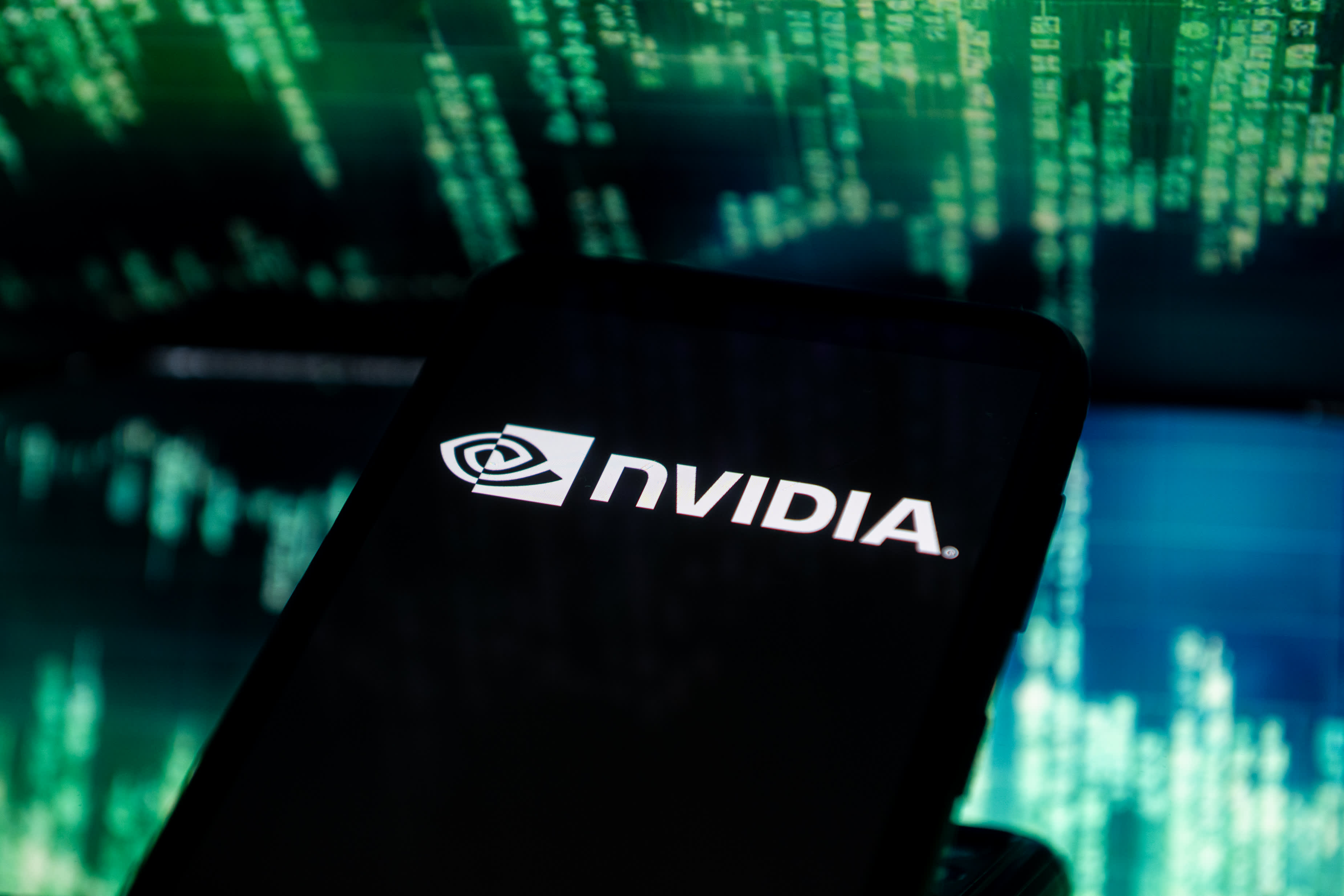
Wall Street’s biggest AI darling is about to report earnings next week, and the results may show whether the mega-cap fueled market rally is justified as investors deliberate the path forward for interest rates. The minutes from the last Federal Reserve meeting in January are also on deck. Nvidia is set to post results next Wednesday, and expectations are high for the powerhouse stock that’s already up roughly 250% over the past 12 months. In its fourth quarter, Nvidia is projected to post annual growth of 118% to $59.04 billion in sales, driven by demand for its artificial intelligence server chips. The stakes are high for markets as well. Nvidia, which this week surpassed Alphabet in market capitalization , is now the third largest public company in the U.S., and a major contributor to gains in the S & P 500. The AI chipmaker has surged more than 40% this year, while the broader index is up about 5%. NVDA 1Y mountain Nvidia But a failure to beat expectations will likely dent Nvidia and the broader market. In November, the last time Nvidia posted quarterly results , the AI chipmaker fell 1% even after surpassing estimates on the top and bottom lines. “The bar is a little bit high at this point,” said Ayako Yoshioka, senior portfolio manager at Wealth Enhancement Group. “And, you know, the stock may just pull back a little bit even if they meet and or beat expectations. I think there might be some profit taking in the name in the short term.” In fact, as of Friday, the options implied move for Nvidia stands at about 10%, according to a CNBC analysis of data from FactSet. The options implied move refers to how much a stock’s price may change, up or down, following a major event such as an earnings announcement based on trading in the options market. “If we get a pullback of 11%, 15% on Nvidia, that could really impact, I think, overall markets,” Yoshioka said. “Just because you’re losing, you know, a good horse in the game.” Wall Street closed out a choppy week, with all three major averages lower. The Dow Jones Industrial Average, S & P 500 and the Nasdaq Composite each snapped a five-week advance. All focus on interest rates The Federal Reserve meeting minutes are also set to come out next Wednesday, an event that’s likely to take on greater significance after this week’s January consumer price and producer price reports showed the central bank has further to go toward its 2% inflation target. At the last meeting, Fed Chair Jerome Powell said he would continue to look for “more good data” on inflation, and shot down the possibility of a March rate cut. Investor hopes that rate cuts may still arrive sooner than later will be dashed if Fed meeting minutes show hawkish bias toward policy. The CME FedWatch Tool shows that markets are now pricing in only a roughly 50% chance of a quarter percentage point cut in June, based on interest rate futures trading. But the current environment of high interest rates has many investors concerned about the equity market, especially with nose-bleed valuations in mega-cap tech stocks, and further downside risk seen in interest rate sensitive sectors such as regional banks. Geopolitical risks, as well as volatility around a U.S. election later this year, are also expected to limit upside in stocks. On average, market strategists on Wall Street anticipate the S & P 500 will end the year at 4,936, according to a CNBC survey . But the broader index has already cleared that target, having recently topped 5,000, and has repeatedly notched fresh record highs less than seven weeks into the new year. Playing both sides Some expect that means now is the time to diversify into the other 493 S & P 500 stocks that have yet to play catch up to the Magnificent Seven. The equal-weighted S & P 500 index is up just 1.7% in 2024, trailing far behind the market-cap weighted benchmark. More investors also expect now is the time to work both sides of a traditional stock-bond portfolio, especially as bond yields start to look more attractive. On Friday, the 10-year Treasury yield hovered near 4.3%. US10Y 1Y mountain U.S. 10-year Treasury Josh Emanuel, chief investment officer at Wilshire Associates in Santa Monica, Calif., is starting to underweight equity risk and raise his fixed income exposure. He especially favors investment-grade corporates and government bonds that he says could offset risk in his equity portfolio if some exogenous event hits markets. “In this environment, where everybody’s become comfortable with risk, it’s usually the risk that nobody sees coming that ends up being the real risk that hits markets,” Emanuel said. “And in that environment where the risk materializes, your duration or your interest rate sensitivity on bonds is going to pay.” To illustrate the point, Emanuel noted a 10-year Treasury note today could earn 9% to 10% in capital appreciation should yields fall by one percentage point. “We really advocate diversification in this kind of environment,” he said. Wealth Enhancement Group’s Yoshioka agreed that bonds offer a better relative value to equities at this point, saying investors can “play both sides a little bit” and extend duration to lock in higher rates. But she noted she would take any pullback in stocks — of about 5% to 10% — as an opportunity to buy back in. Eventually, she expects rate cuts will be a boon to small caps, which have underperformed this year. The Russell 2000 is up ahead just 0.7% in 2024. Among individual investors, at least, optimism remains high. In the week ending Feb. 14, bullish sentiment fell to 42.2%, down from 49% the previous week, but still above the historical average of 37.5% for the 15th straight week, according to the American Association of Individual Investors sentiment survey. But that could be a recipe for disappointment as concerns swirl around markets. “Retail investors are largely crowd followers. They’re not really crowd leaders,” said Chris Chen, wealth strategist at Insight Financial Strategists. “Eventually, there’s going to be a correction there and then they’re going to run away from equities.” “When it comes to equities, it pays for individual investors to be long term investors as opposed to traders,” Chen added. Elsewhere, investors are set to get earnings from some major corporate bellwethers next week. Both Walmart and Home Depot are due to report results on Tuesday. Markets are closed Monday in celebration of the Presidents Day holiday. Week ahead calendar All times ET. Monday February 19, 2024 Presidents Day Holiday Tuesday February 20, 2024 10 a.m. Leading Indicators (January) Earnings: Public Storage , Palo Alto Networks , Diamondback Energy , Caesars Entertainment , Walmart , Home Depot Wednesday February 21, 2024 2 p.m. FOMC Minutes Earnings: Nvidia , Marathon Oil , Etsy , Analog Devices , Exelon Thursday, February 22, 2024 8:30 a.m. Chicago Fed National Activity Index (January) 8:30 a.m. Continuing Jobless Claims (02/10) 8:30 a.m. Initial Claims (02/17) 9:45 a.m. PMI Composite preliminary (February) 9:45 a.m. S & P PMI Manufacturing preliminary (February) 9:45 a.m. S & P PMI Services preliminary (February) 10 a.m. Existing Homes Sales (January) Earnings: Booking Holdings , Live Nation Entertainment , Intuit , Edison International , Dominion Energy , Moderna , PG & E , Keurig Dr. Pepper Friday, February 23, 2024 Earnings: Warner Bros. Discovery — CNBC’s Nick Wells and Kif Leswing contributed to this report.








